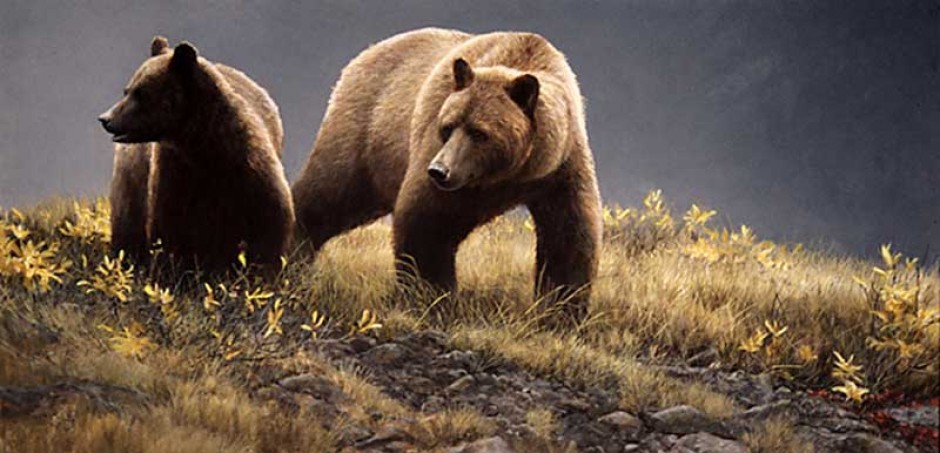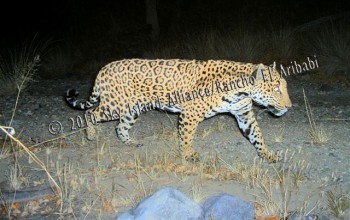Since first publishing the story of Macho B on this blog, several important events have taken place.
On January 22nd, the Inspector General of the U.S. Department of the Interior announced the findings of the investigation into the death of Macho B. The report stated that AGFD had intentionally – and criminally – trapped Macho B without the proper federal permit as required under the Endangered Species Act. Several specific violations by AGFD employees were noted and the report went on to state that the case would now be turned over to the U.S. Attorney General’s Office in Tucson for possible criminal prosecution against the AGFD workers. No names were given, but it is assumed that Emil McCain, the biologist and contractor who allegedly ordered the setting and the baiting of the snare that caught Macho B, was the primary focus of the investigation and its findings. The report also criticized AGFD for not conducting the proper necropsy (an animal autopsy), noting that Steve Spangler, a supervisor for all endangered species activities in Arizona, mistakenly ordered only a “cosmetic” rather than the called for full necropsy, and in fact, did not even know what a necropsy was.
Earlier, on January 13th, The U.S Fish and Wildlife Service announced that it was reversing its long time position and would designate “critical habitat” for jaguars in the American Southwest. Critical habitat is defined under the Endangered Species Act as “specific geographic area(s) that is essential for the conservation of a threatened or endangered species and may require special management and protection.” The definition then goes on to state “critical habitat may include an area that is not currently occupied by the species but that will be needed for its recovery.”
Environmentalists have long called for the designation of critical habitat for jaguars. AGFD, hunters, ranchers and other landowners have long opposed such designation fearing that it would limit their access and use of the land. The U.S. Fish and Wildlife Service had long argued that jaguars were primarily native to South and Central America and that any jaguar appearing in the U.S. borderlands region would be a “transient” animal from Mexico. Those who opposed designation of critical habitat also maintained that the borderlands were at best “marginal” habitat for jaguars. The Macho B tragedy dispelled this myth. It was clear that Macho B was a resident jaguar who for at least 15 years not only survived, but thrived in the mountains and deserts of Arizona. The publicity surrounding the death of Macho B played a major role in leading the U.S. Fish and Wildlife Service to reconsider its position.
Within days of the U.S. Fish and Wildlife announcement, the famed jaguar biologist Alan Rabinowitz published an Op Ed in the New York Times criticizing this policy change. My response to Rabinowitz which will be published in the next Sky Island Alliance Newsletter.
Earlier in January a third event had taken place which was not yet known to anyone. A remote camera set out by Sergio Avila of the Northern Jaguar Project and Sky Island Alliance captured an image of a jaguar on the Rancho El Aribabi in Sonora, Mexico less than 30 miles from the U.S. border. Considering the fact that the home range of a jaguar might be up to 525 square miles in size, it seems highly likely that this animal has spent time in the United States. No one knows, or will even venture an educated guess, as to how many jaguars remain in Mexico. One source estimates there may be 2000. But it seems more likely that the number of jaguars left in this nation might more properly be measured in the hundreds. Without question, however, a breeding population exists in the northern state of Sonora. If the United States protects its habitat in the borderland regions of Arizona, New Mexico, and Texas, jaguars will continue to enter – and hopefully repopulate – the American Southwest.
Bibliography
Tony Davis. 2010. “Camera Snaps Jaguar Photo Below Border,” Arizona Daily Star. February 16.
Tony Davis and Tim Steller. 2010. “Jaguar’s Capture Broke Law, Feds Say,” Arizona Daily Star. January 22.
Leslie Kaufman. 2010. “In Reversal, Jaguar Habitat Will Be Protected,” The New York Times. January 13.
Leslie Kaufman. 2010. “Arizona Intentionally Snared Jaguar, Inquiry Finds,” Arizona Daily Star. January 23.
Alan Rabinowitz. 2010. “Jaguars Don’t Live Here Anymore,” The New York Times. January 25.
Sky Island Alliance. 2010. “Northern Jaguars Are a Reality: Sky Island Alliance and Partnering Mexican Rancher Document Jaguar Close to U.S./Mexican Border,” News Release. February 15.


Pingback: Steve Pavlik · Who is the Beast?